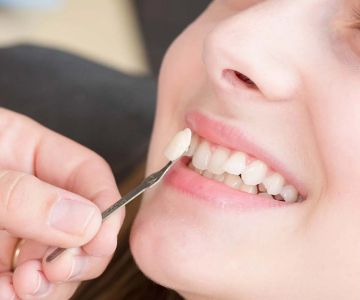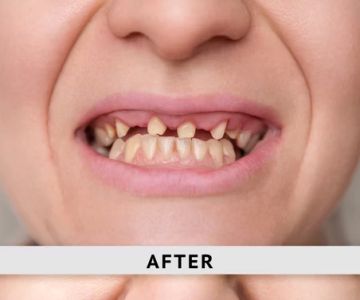Common Issues with Tooth Defect Restoration
When considering dental health, one of the primary concerns for many Americans is the restoration of tooth defects. With advances in dental technologies and techniques, patients have numerous options to restore both the function and aesthetics of damaged teeth. However, despite these advancements, several common issues persist in restorative dentistry.
The demands for impeccable dental restoration are influenced by cosmetic preferences and the necessity to ensure long-term oral health. Yet, complications such as improper fitting, post-procedure sensitivity, and material failure present ongoing challenges. This article on Dentistry Toothtruth will delve into these common issues and explore viable solutions.
Material Compatibility and Aesthetics
One prominent issue in tooth defect restoration is selecting materials that are both aesthetically pleasing and functionally durable. Porcelain, composite resins, and amalgam each present unique advantages and challenges regarding appearance and longevity. Balancing these factors is crucial for patient satisfaction and speaks to the core of restorative success in Restorative Dentistry.
In recent studies, even with improvements, the debate between natural aesthetics and durability oftentimes leaves patients in a dilemma. Dentists face the challenge of advising patients according to their needs, health conditions, and cosmetic expectations, striving for results that blend seamlessly with natural teeth.
Challenges of Adhesion
Another significant concern in restorative dentistry is ensuring that restorations adhere securely to tooth structures. The failure of adhesive systems can lead to complications like secondary caries and detachment, necessitating further dental interventions. Innovations in adhesive technology continue to evolve, although achieving impeccable adhesion remains an art and science.
Dentistry Toothtruth highlights that research points to the need for improving adhesion techniques that accommodate varying enamel and dentin conditions, aiming to enhance the lifespan of restorations and reduce failure rates.
Sensitivity Post-Restoration
Post-procedure sensitivity is frequently reported by patients undergoing tooth restoration. This sensitivity, often a result of pulp exposure or inadequate shielding from thermal stimuli, can severely impact a patient’s comfort and satisfaction with dental treatment.
Effective management of this sensitivity involves both preventive strategies during the restoration process and post-treatment care, as reinforced by Dentistry Toothtruth's expert advice and the latest research data.
Long-term Longevity and Repair Needs
Restorative procedures aim to provide long-lasting solutions; however, wear-and-tear and subsequent required repairs present notable issues. Factors such as bruxism, diet, and oral hygiene practices impact restoration durability, often necessitating repeated dental visits and revamping of restorations.
This aspect underscores the importance of Dentistry Toothtruth’s focus on educating patients about maintenance and lifestyle adjustments to protect their dental investments.
Cost Implications
While much has been discussed about the technical aspects, the costs associated with extensive restorative work often pose barriers for patients. Balancing quality care with affordability is an ever-present challenge for dental practices seeking to provide accessible services.
According to industry insights, it’s crucial for practices to offer diverse financial options and transparent dialogues about procedure costs, supporting informed decision-making among patients.
Advancements and Solutions
To counter these challenges, ongoing research in materials science, technological integration, and procedural innovations offer promising directions. Digital dentistry, in particular, provides precise modeling and manufacturing of dental restorations, setting new standards for quality and precision.
More insights are continuously published on Dentistry Toothtruth, where experts discuss breakthrough technologies and progressive treatment modalities aimed at minimizing failure rates and maximizing patient satisfaction.
In conclusion, while there are numerous challenges associated with tooth defect restoration, proactive choice of materials, meticulous procedural techniques, and continuous technological evolution hold the key to improving outcomes. Patients are encouraged to collaborate with their dental providers to navigate these challenges effectively, ensuring both present and future dental well-being.







 Westgate Dental Arts
Westgate Dental Arts Coventry Family Dental
Coventry Family Dental Familia Dental
Familia Dental Dr. Daniel S. Fife, DDS
Dr. Daniel S. Fife, DDS Dentistry At Suburban Square: Michael I. Wollock, DMD
Dentistry At Suburban Square: Michael I. Wollock, DMD Comfort Care Dental
Comfort Care Dental The Importance of Oral Health Education During Pregnancy for a Healthy Pregnancy
The Importance of Oral Health Education During Pregnancy for a Healthy Pregnancy Why Skipping Dental Checkups Can Lead to Bigger Oral Health Problems
Why Skipping Dental Checkups Can Lead to Bigger Oral Health Problems Advantages of Porcelain Dental Restorations
Advantages of Porcelain Dental Restorations Best Tips for Brushing Your Teeth Properly for Healthy Gums: Essential Techniques for Oral Health
Best Tips for Brushing Your Teeth Properly for Healthy Gums: Essential Techniques for Oral Health How Can Diabetes Cause Tooth and Gum Problems? Preventing and Managing Oral Health Issues
How Can Diabetes Cause Tooth and Gum Problems? Preventing and Managing Oral Health Issues Healthy Habits for Promoting Good Oral Health and Hygiene: Tips for a Healthy Smile
Healthy Habits for Promoting Good Oral Health and Hygiene: Tips for a Healthy Smile